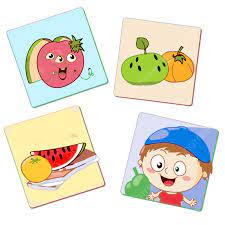1/42
What is mass?
Mass is the amount of matter in an object.
2/42
What is the international unit used to measure mass?
Kilogram (kg).
3/42
Does air occupy space? How can you prove it?
Yes. A glass upside down in water proves it because water doesn't enter.
4/42
In Activity 2.1, why did the handkerchief stay dry when the glass was placed upside down?
Air inside the glass occupied space and prevented water from entering.
5/42
Does air have mass?
Yes, air has mass.
6/42
How can we prove air has mass using balloons and a ruler?
When air is let out of one balloon, the ruler tilts because the mass on that side decreases.
7/42
Give two examples of things that have mass and occupy space.
Pen, water.
8/42
Does sunlight have mass?
No, sunlight does not have mass.
9/42
Why does the meter ruler lose balance when air is released from one balloon in Activity 2.2?
Because the mass on that side decreases as the air escapes.
10/42
Name two units, other than kilograms, that are used to measure mass.
Grams (g), milligrams (mg).
11/42
During your observation in a garden, give one example each of something you can see, hear, feel.
See: Trees | Hear: Bird sounds | Feel: Soft breeze.
12/42
Why can’t we say sunlight occupies space?
Because sunlight is energy, not matter, so it doesn’t occupy space or have mass.
13/42
What is matter?
Matter is anything that has mass and occupies space.
14/42
Give two examples of things that are energy, not matter.
Light, heat, sound.
15/42
Why is air classified as matter?
Because it has mass and occupies space.
16/42
During an experiment, an empty bottle placed upside down in water prevents water from entering. What does this show?
Air in the bottle occupies space.
17/42
What are the three physical states of matter?
Solid, liquid, gas.
18/42
Which state of matter has a definite shape and volume?
Solid.
19/42
Which state of matter has no definite shape but a definite volume?
Liquid.
20/42
Which state of matter has no definite shape and no definite volume?
Gas.
21/42
Why does water take the shape of any container you pour it into?
Because liquids do not have a definite shape.
22/42
When smoke from a joss stick fills two gas jars, what does it show about gas?
Gases do not have a definite volume and spread to fill their container.
23/42
Give two examples of solids you might find in your kitchen.
Sugar, rice.
24/42
Give two examples of liquids commonly found in the kitchen.
Milk, coconut oil.
25/42
Give two examples of gases you might encounter in the kitchen.
Air, cooking gas (L.P. gas).
26/42
Why does air escape as bubbles when a bottle is tilted underwater?
Because the air inside is forced out to let the water enter, showing air occupies space.
27/42
Why do gases spread throughout the entire container they are in?
Because gases have no definite shape or volume and fill any available space.
28/42
What is hardness in solid materials?
Hardness is the resistance of a material to scratching, abrasion, or cutting.
29/42
Name two materials with high hardness.
Diamond and iron.
30/42
What is malleability?
Malleability is the ability of a metal to be drawn into thin sheets without breaking by hammering or rolling.
31/42
Give an example of a malleable material.
Copper (or iron).
32/42
What is ductility?
Ductility is the ability of a metal to be drawn into thin wires without breaking.
33/42
Name two ductile metals.
Copper and aluminium.
34/42
What is the elastic nature of a material?
It is the property that allows a material’s length to increase when a force stretches it.
35/42
Why is rubber used to make teats and gloves?
Because of its elastic nature — it can stretch and return to shape.
36/42
What is brittleness?
Brittleness is the tendency of a material to break under a small force.
37/42
Why is diamond used to cut glass?
Because of its high hardness.
38/42
What property of metals like gold and silver makes them suitable for jewellery?
Malleability and ductility — they can be shaped and drawn into fine designs.
39/42
Why is cotton considered smooth?
Because it has a soft and fine texture when touched.
40/42
In construction, why are strong and hard materials used for grills and doors?
To provide strength, durability, and resistance to external force.
41/42
Which property explains why glass breaks easily when struck?
Brittleness.
42/42
Complete this example: Application: Tyres of a vehicle → Material: Rubber → Property: Elastic nature
Application: Cutting glass → Material: Diamond → Property: Hardness





.png)


